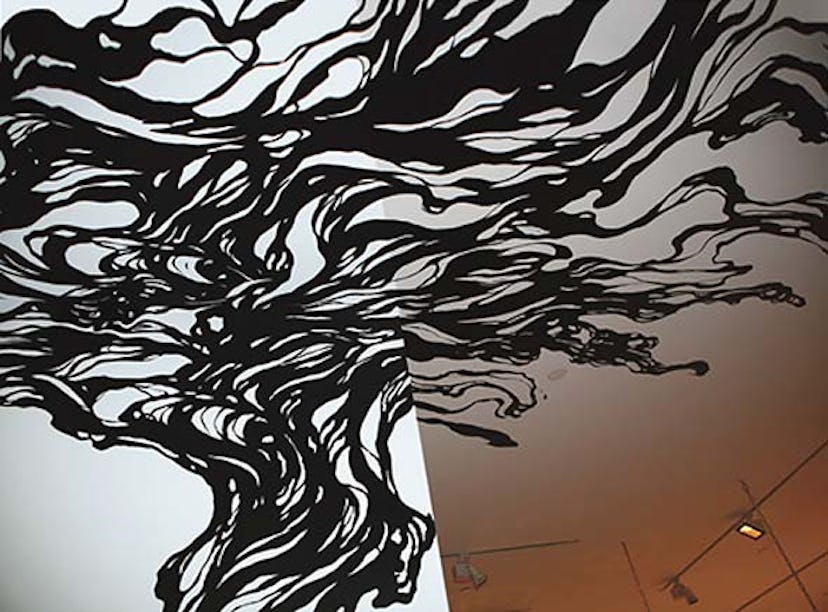Art and Commerce

The guests are the same as at any high-wattage museum gala or A-list Chelsea gallery opening: On one side of the room, megacollectors Tico Mugrabi and Aby Rosen mingle under a Marilyn Minter C-print while the artist herself chats with the evening’s hostess, Stephanie Seymour Brant; near the door, Yvonne Force Villareal embraces painter Will Cotton as Jeanne Greenberg Rohatyn catches up with young gallerist Mirabelle Marden. But while the players are certainly familiar, the setting is decidedly not. Just one flight downstairs are shelves displaying leather bags adorned with the house’s signature stirrup-like hardware and mannequins wearing the latest winter coats.
This highly nontraditional gallery is on the second floor of the Salvatore Ferragamo flagship on Fifth Avenue. The space may be small and not far from the changing rooms, but, at least for this event, the Italian fashion house has spared no expense. An army of waiters in slim black suits offer champagne before the 32 guests take their seats at rose-adorned tables for a four-course feast (Maine lobster with burgundy cherries and quail encased in gold leaf). “I’ll tell you one thing: I wish art galleries had dinners like this after openings,” says Minter.
The evening’s festivities and the exhibit—a group show organized by art consultant Blair Voltz Clarke—are all part of Ferragamo’s efforts to intertwine an artistic message with the luxury brand. Brant (married to art-world heavy Peter) also stars in the company’s current ad campaign. The show, “Abbondanza,” explores the idea of excess through such works as John Waters’s Loser Gift Basket (on loan from the Marianne Boesky Gallery) and John Miller’s The Corpse (from Metro Pictures). “The luxury customers are the same people who are involved in collecting art,” says Michele Norsa, CEO of Salvatore Ferragamo.
Salvatore Ferragamo already has a company museum in Florence that exhibits its archive of shoes and clothing. The New York flagship has had this gallery space since 2003, and Ferragamo has similar galleries in its Tokyo and Seoul stores.
Appealing to retail customers while retaining respect in the notoriously difficult art world, however, is not easy. “It’s a little contrived,” notes Rosen, looking around skeptically. Others are more accepting of Ferragamo’s efforts. “These exhibits do bring in the art world,” allows Villareal, an art adviser, gesturing toward Mugrabi and dealers Mary Boone and Gavin Brown. “Art is coming into the mainstream,” agrees Mugrabi. “Look at Damien Hirst working with Levi’s. Look at Andy Warhol. Claes Oldenburg even made a store to sell work,” he says, referring to the artist’s 1961 installation, The Store.
And most of the artists claim they don’t mind exhibiting in such a blatantly commercial venue: “Hell, no. I don’t mind,” says Minter. “Your work goes into people’s houses and you don’t know what they’ll do with it.”
Cotton was awarded the retailer’s most prestigious place—a storefront window—for his painting, a sickly sweet image of a cabin made of frosted doughnuts. “People who don’t go to Chelsea regularly might do a double take and say, ‘What is that?’” he says.
“It ain’t more commercial than a gallery,” says Cory Arcangel, who arrived at dinner looking the picture of a downtown artist in jeans, sneakers and a rakish baseball cap. And he’s right—Salvatore Ferragamo does not sell the works directly, but interested buyers can contact the galleries. As Arcangel checks out his piece, a constantly changing mosaic of colored pixels flashing across a flat-screen TV, he says, “It’s definitely the farthest uptown my work has ever been.”